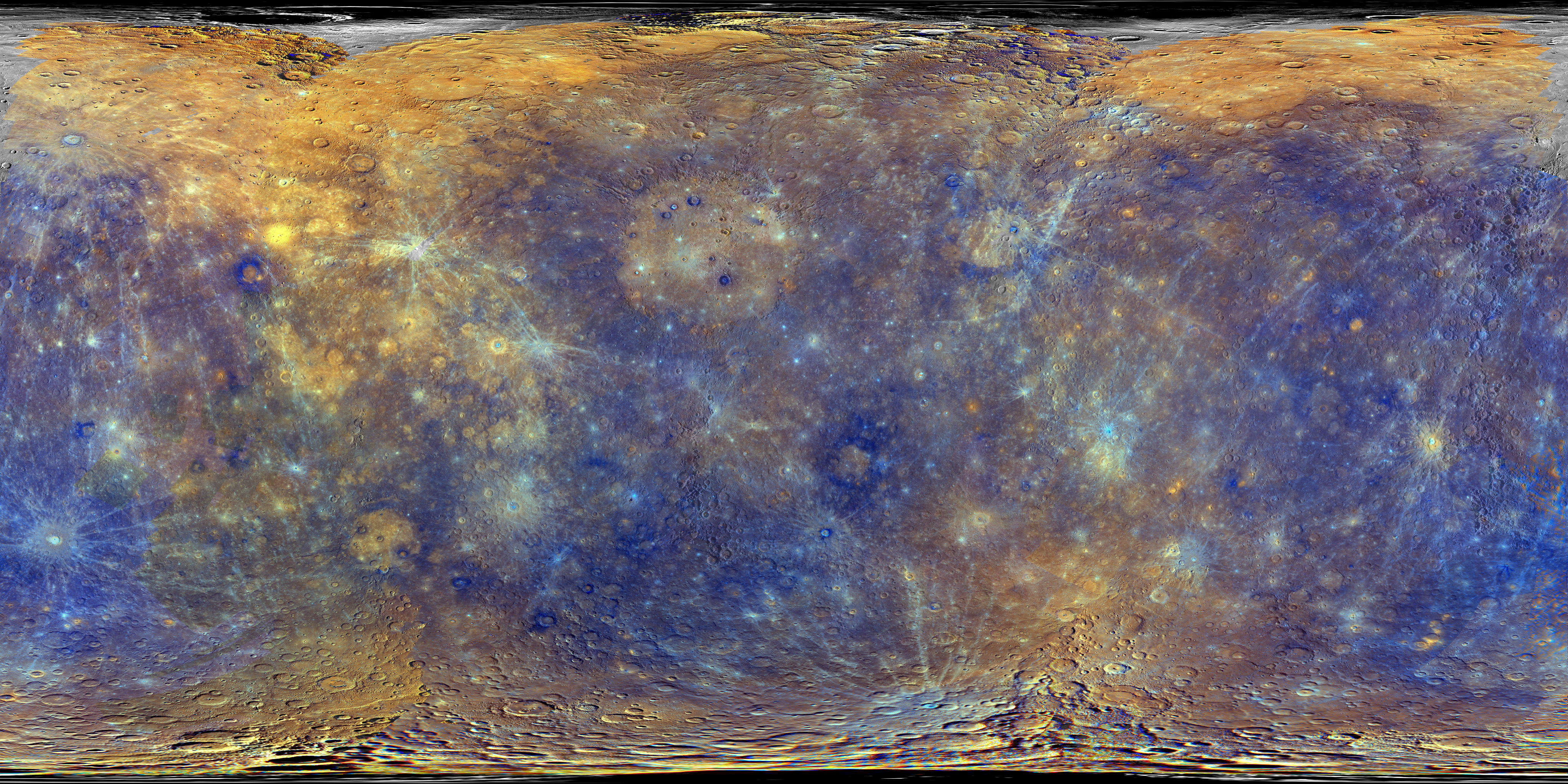
Mercury is nobody's favorite planet. Our star's closest companion is a hateful little ball pocked with craters and patches of graphite, continually blasted by solar wind. But according to a recent study from a team of Chinese and Belgian scientists (via Space.com), there are diamonds under all that rough. A 10-mile-thick layer of diamond, to be specific.
Those patches of graphite I mentioned have led scientists to theorize that in Mercury's early history, it was host to an ocean of molten carbon that floated to its surface and cooled, leaving a carbon-rich mantle in its wake beneath the planet's crust. Using data from NASA'S MESSENGER spacecraft, the study calculates that a section of its mantle previously thought to be graphite may actually be a 10-mile-thick layer of diamond.
"We calculate that, given the new estimate of the pressure at the mantle-core boundary, and knowing that Mercury is a carbon-rich planet, the carbon-bearing mineral that would form at the interface between mantle and core is diamond and not graphite," said Olivier Namur, one of the study's authors and an associate professor at KU Leuven.
Because all our greatest discoveries come from squishing things, the team compressed a synthetic approximation of Mercury's mantle in a large-volume press to emulate the pressures and temperatures of the planet's interior, simulating how the molten, carbon-rich material in Mercury's early history would have behaved.
Their simulations indicate that in Mercury's turbulent adolescence, the metal of its then-liquid core gradually crystallized. As crystallization progressed, any carbon that was present in the core was concentrated in the uncrystallized molten metal, until eventually no more carbon could be dissolved in the dwindling liquid. Diamond formed from the pressurized, insoluble carbon, and because diamond is less dense than metal, it floated upwards, gradually forming a kilometer-thick layer of diamond at the boundary between Mercury's core and mantle.

The team's models indicate that the diamond layer would've grown over time. Today, if the study's calculations are correct, Mercury's mantle has a layer of diamond at least 16 km thick. Being a scientific mind myself, I'm immediately led to ask: How many diamonds would that be in Minecraft?
Using the study's figures for Mercury's mean radius and the depth of its core-mantle boundary, and assuming that its diamond layer begins exactly at that point—an assumption I'm not at all confident in or qualified to make, but here we are—I've calculated the volume of that diamond layer as being roughly 292 billion cubic meters. In Minecraft, each block represents a cubic meter, and you can craft a block of diamond from nine individual diamonds. Meaning, in total, Mercury's 16 km-thick diamond layer would produce about 2 trillion, 628 billion diamonds. You're going to need a lot of pickaxes.
As for what we could craft with all those diamonds, let's assume you want the essentials: a full set of diamond armor and a sword, axe, and pickaxe. Mercury would provide you with the material to outfit yourself 82 billion times over. Of course, you'll need more than like, 17 billion sticks for the tools. You'll have to source those yourself, I guess.
Out of curiosity, I started doing some quick math on how much Mercury's inner diamond sphere would be worth in real people money, and by my estimation it'd almost certainly implode the global economy. A single cubic meter of diamond—already an absurdity on its own—is about 17,570,000 carats, which would theoretically be worth upwards of 70 billion dollars if we're using the average price of a 1-carat diamond as a guideline. And Mercury's got almost 300 billion cubic meters. In this economy?
It'd probably be better off in Minecraft. Half of my diamond stuff usually ended up in the lava anyway. A few billion backups wouldn't hurt.







